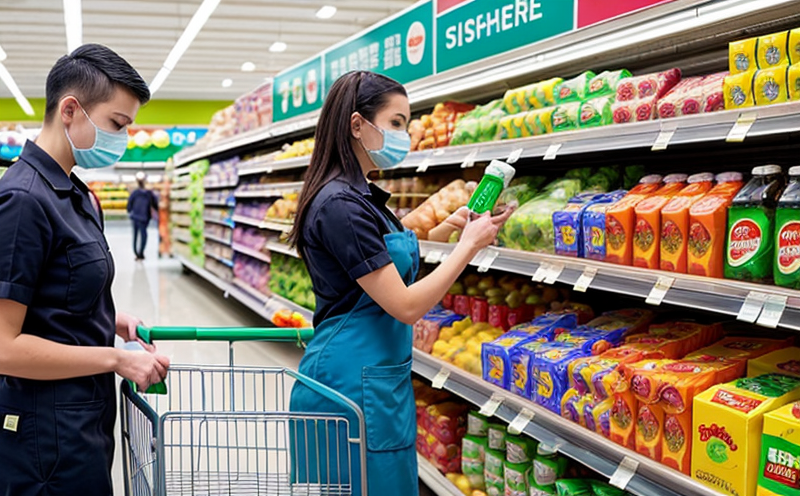Supermarket hygiene inspection
The importance of supermarket hygiene cannot be overstated. Ensuring that food products are free from contamination is a critical aspect of maintaining consumer trust and safety. This service focuses on the comprehensive inspection of supermarkets to guarantee that all hygiene standards are met, thereby protecting public health.
Supermarket hygiene inspections cover various aspects including cleanliness of shelves and displays, sanitation of refrigeration units, pest control measures, and adherence to personal hygiene practices by staff members. The primary goal is to ensure that food products remain safe for consumption throughout the supply chain up until they reach the consumer.
The inspection process involves multiple steps aimed at identifying potential risks early on. Initially, an assessment of existing policies and procedures related to cleanliness and sanitation is conducted. This helps in understanding how effectively supermarkets are managing their hygiene standards internally.
Following this evaluation, actual observations during regular visits become crucial. These visits allow us to directly observe the conditions within different areas of the store such as cold storage facilities, fresh produce sections, bakery counters, etc. During these inspections, we pay close attention to cleanliness levels, presence or absence of pests, proper handling practices by employees, and general overall tidiness.
Additionally, sampling plays a significant role in this inspection process. Samples are taken from various parts of the store including but not limited to ready-to-eat foods like salads, sandwiches, desserts, etc., as well as raw meats and poultry products. These samples then undergo laboratory analysis according to established guidelines to check for any signs of contamination.
Another important component of our inspection is reviewing supplier certificates of analysis (CoAs). CoAs provide valuable information about the quality and safety standards adhered to during production, which helps us gauge whether the goods being sold in the supermarket meet necessary criteria before reaching consumers' hands.
To summarize, a thorough supermarket hygiene inspection encompasses several key elements: policy review, observation visits, sampling, and certificate checks. Each of these components contributes towards creating an environment where customers can feel confident about buying high-quality, safe food products from their local grocery stores.
Applied Standards
| Standard Number | Description |
|---|---|
| ISO 22000:2018 | Hazard Analysis and Critical Control Points (HACCP) principles for ensuring food safety. |
| ASTM E2573-16 | Standard practice for the preparation of surfaces in food establishments prior to microbiological sampling. |
| EN 14986:2007 | Guidelines on cleaning and disinfection in food premises. |
| Aspect | Description |
|---|---|
| Cleaning Practices | Evaluation of cleaning schedules, methods used, and equipment employed. |
| Pest Control Measures | Inspection for signs of infestation and effectiveness of control strategies. |
| Personal Hygiene | Assessment of employees' adherence to proper handwashing techniques, wearing protective gear where necessary. |
Why Choose This Test
- Maintain customer trust by ensuring food safety and hygiene standards are met.
- Compliance with international health regulations and local laws.
- Promote a safe work environment for employees handling food products.
- Avoid costly recalls due to contamination issues or non-compliance penalties.
- Enhance brand reputation through consistent high-quality service provision.





